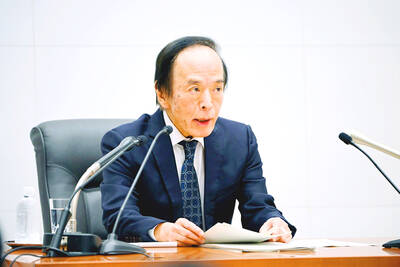Taiwan is expected to allow one-third more Chinese tourists visit the nation next year, local media reported yesterday, ahead of a fresh round of talks between the two sides.
Currently, up to 3,000 Chinese tourists are allowed to visit Taiwan each day, but that quota is expected to be increased to 4,000 from next month to meet strong demand, the Liberty Times reported, citing an unnamed tourism official.
Officials from the Mainland Affairs Council were not immediately available for comment.
Tourism operators welcomed the reported move and called on the government to further relax restrictions.
“The government should raise the daily quota to 5,000,” said Roger Hsu (許高慶), the chief secretary to the Travel Agent Association of Taiwan, which promotes tourism in the nation. Such a level was promised by President Ma Ying-jeou (馬英九) before the 2008 presidential election.
Hsu said Taiwan’s existing tourism facilities such as hotels and buses were more than able cope with a daily quota of that size.
Chinese tourists have made 1.13 million visits to Taiwan so far this year.
Authorities have said tourism grew faster than anywhere else in Asia last year, largely due to the influx of visitors from China.
The report came one day before China’s top negotiator, Chen Yunlin (陳雲林), flies to Taipei for the sixth round of talks since 2008.
Chen, the head of the Association for Relations Across the Taiwan Strait, is scheduled to hold talks with Straits Exchange Foundation Chairman Chiang Pin-kung (江丙坤) tomorrow, officials said.
Ties have improved markedly since Ma came to power in 2008, with the two sides resuming routine high-level direct unofficial talks and adopting various measures to boost trade and tourism.

Taiwan’s long-term economic competitiveness will hinge not only on national champions like Taiwan Semiconductor Manufacturing Co. (TSMC, 台積電) but also on the widespread adoption of artificial intelligence (AI) and other emerging technologies, a US-based scholar has said. At a lecture in Taipei on Tuesday, Jeffrey Ding, assistant professor of political science at the George Washington University and author of "Technology and the Rise of Great Powers," argued that historical experience shows that general-purpose technologies (GPTs) — such as electricity, computers and now AI — shape long-term economic advantages through their diffusion across the broader economy. "What really matters is not who pioneers

In a high-security Shenzhen laboratory, Chinese scientists have built what Washington has spent years trying to prevent: a prototype of a machine capable of producing the cutting-edge semiconductor chips that power artificial intelligence (AI), smartphones and weapons central to Western military dominance, Reuters has learned. Completed early this year and undergoing testing, the prototype fills nearly an entire factory floor. It was built by a team of former engineers from Dutch semiconductor giant ASML who reverse-engineered the company’s extreme ultraviolet lithography (EUV) machines, according to two people with knowledge of the project. EUV machines sit at the heart of a technological Cold

TAIWAN VALUE CHAIN: Foxtron is to fully own Luxgen following the transaction and it plans to launch a new electric model, the Foxtron Bria, in Taiwan next year Yulon Motor Co (裕隆汽車) yesterday said that its board of directors approved the disposal of its electric vehicle (EV) unit, Luxgen Motor Co (納智捷汽車), to Foxtron Vehicle Technologies Co (鴻華先進) for NT$787.6 million (US$24.98 million). Foxtron, a half-half joint venture between Yulon affiliate Hua-Chuang Automobile Information Technical Center Co (華創車電) and Hon Hai Precision Industry Co (鴻海精密), expects to wrap up the deal in the first quarter of next year. Foxtron would fully own Luxgen following the transaction, including five car distributing companies, outlets and all employees. The deal is subject to the approval of the Fair Trade Commission, Foxtron said. “Foxtron will be

INFLATION CONSIDERATION: The BOJ governor said that it would ‘keep making appropriate decisions’ and would adjust depending on the economy and prices The Bank of Japan (BOJ) yesterday raised its benchmark interest rate to the highest in 30 years and said more increases are in the pipeline if conditions allow, in a sign of growing conviction that it can attain the stable inflation target it has pursued for more than a decade. Bank of Japan Governor Kazuo Ueda’s policy board increased the rate by 0.2 percentage points to 0.75 percent, in a unanimous decision, the bank said in a statement. The central bank cited the rising likelihood of its economic outlook being realized. The rate change was expected by all 50 economists surveyed by Bloomberg. The